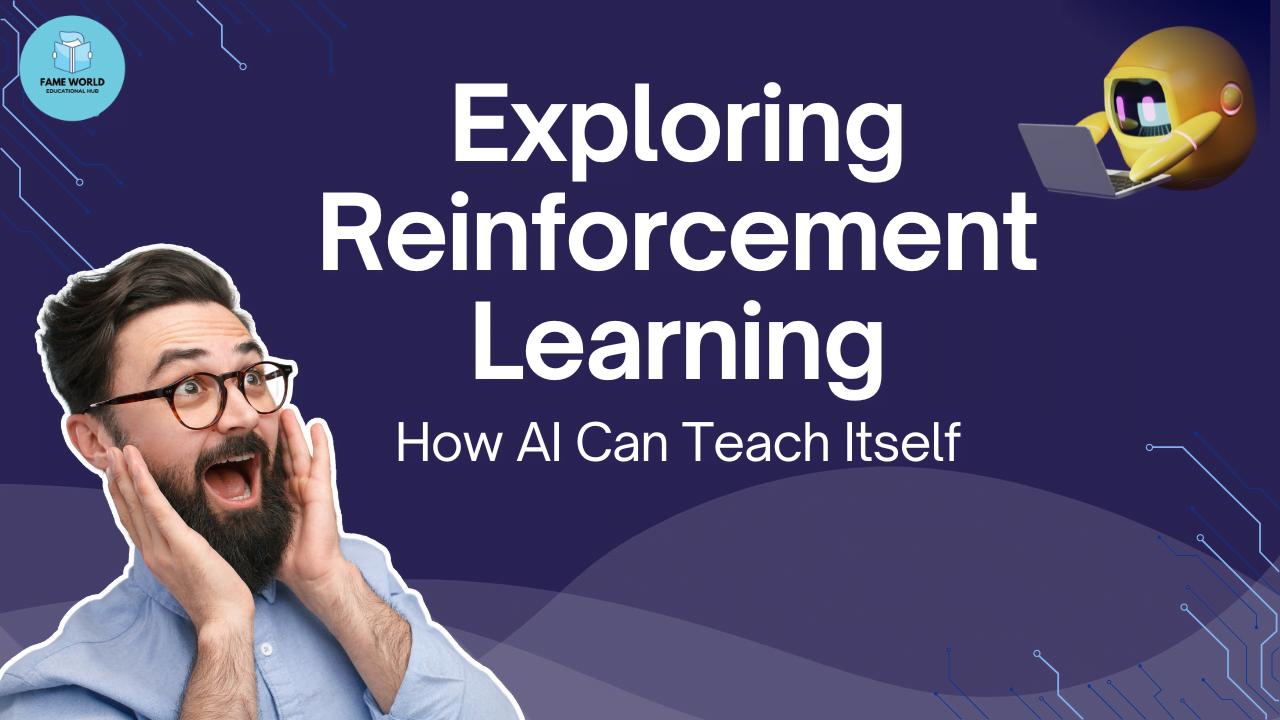In the world of artificial intelligence (AI), reinforcement learning (RL) stands out as a fascinating and powerful approach that enables machines to learn from their own experiences. Unlike supervised learning, where models are trained on labeled data, reinforcement learning allows AI systems to learn optimal behaviors through trial and error. This blog post will explore the fundamentals of reinforcement learning, its key components, practical applications, and the challenges and future directions in this dynamic field.
What is Reinforcement Learning?
Reinforcement Learning (RL) is a type of machine learning where an agent learns to make decisions by interacting with an environment. The goal of RL is to learn a policy that maximizes cumulative rewards over time. This learning process is inspired by behavioral psychology, where learning is driven by rewards and punishments.
In an RL setup, the agent takes actions in an environment, receives feedback in the form of rewards or penalties, and adjusts its behavior to maximize the total reward. This trial-and-error approach enables the agent to discover strategies that lead to better outcomes.
Key Components of Reinforcement Learning
Agent: The learner or decision-maker that interacts with the environment. It chooses actions based on its policy.
Environment: The external system or world with which the agent interacts. It responds to the agent’s actions and provides feedback.
Action: A choice made by the agent that affects the environment. Actions are taken based on the current state of the environment.
State: A representation of the current situation of the environment. The state helps the agent decide which action to take.
Reward: Feedback from the environment in response to the agent’s action. Rewards can be positive (encouraging) or negative (discouraging).
Policy: A strategy or mapping from states to actions that the agent follows. The policy determines the agent’s behavior.
Value Function: A function that estimates the expected cumulative reward for a given state or state-action pair. It helps the agent evaluate the desirability of states and actions.
Q-Learning: A specific RL algorithm that learns the value of state-action pairs. It updates the value function based on the rewards received and helps the agent learn the optimal policy.
How Reinforcement Learning Works
The RL process involves the following steps:
Initialization: The agent starts with an initial policy, often random, and explores the environment.
Interaction: The agent takes an action in the environment, which transitions it to a new state and receives a reward.
Learning: The agent updates its policy based on the feedback received. It adjusts its behavior to maximize future rewards.
Evaluation: The agent evaluates the performance of its policy by testing it in various scenarios and comparing the results.
Improvement: The agent iteratively refines its policy based on the evaluation results to improve its performance over time.
Practical Applications of Reinforcement Learning
Reinforcement learning has a wide range of applications across various domains:
Game Playing: RL has been used to develop AI agents that can play complex games like chess, Go, and video games at superhuman levels. For example, AlphaGo, developed by DeepMind, defeated world champions in the game of Go.
Robotics: RL helps robots learn to perform tasks such as grasping objects, navigating environments, and manipulating tools. Robots can improve their skills through trial and error without requiring explicit programming.
Finance: RL is used for algorithmic trading, portfolio management, and risk assessment. Agents can learn to make investment decisions that maximize returns while managing risks.
Healthcare: RL can optimize treatment plans, personalize medicine, and improve patient outcomes. It can also be used to develop adaptive strategies for managing chronic conditions.
Autonomous Vehicles: RL helps self-driving cars learn to navigate roads, avoid obstacles, and make driving decisions in dynamic environments.
Challenges in Reinforcement Learning
Despite its potential, RL faces several challenges:
Sample Efficiency: RL often requires a large number of interactions with the environment to learn effectively. This can be impractical in real-world scenarios where data collection is expensive or time-consuming.
Exploration vs. Exploitation: Balancing exploration (trying new actions) and exploitation (choosing known actions) is a key challenge. Too much exploration can lead to suboptimal performance, while too little can prevent the agent from discovering better strategies.
Stability and Convergence: RL algorithms can be unstable and may not always converge to an optimal policy. Ensuring stability and convergence is an active area of research.
Scalability: Applying RL to complex, high-dimensional environments can be challenging. Techniques such as deep reinforcement learning (DRL) are used to address scalability issues by combining RL with deep learning.
Future Directions
The field of reinforcement learning is rapidly evolving, with several promising directions for future research:
Multi-Agent Systems: Developing RL algorithms for scenarios involving multiple interacting agents, such as cooperative or competitive environments.
Transfer Learning: Enabling agents to transfer knowledge learned in one domain to new, related domains, reducing the need for extensive retraining.
Hierarchical RL: Creating hierarchical structures to break down complex tasks into simpler sub-tasks, improving learning efficiency and interpretability.
Ethical Considerations: Addressing ethical and safety concerns related to RL, such as ensuring that AI systems behave in alignment with human values and avoiding unintended consequences.
Conclusion
Reinforcement learning represents a powerful paradigm in AI that enables machines to teach themselves through interaction with their environment. By learning from trial and error, RL agents can discover optimal strategies and make informed decisions in complex situations. While there are challenges to overcome, ongoing research and advancements are pushing the boundaries of what RL can achieve. As RL continues to evolve, it holds the potential to revolutionize various industries and drive innovations in AI.
Whether you’re a researcher, developer, or enthusiast, exploring reinforcement learning offers exciting opportunities to understand how AI can learn, adapt, and thrive in dynamic environments.



